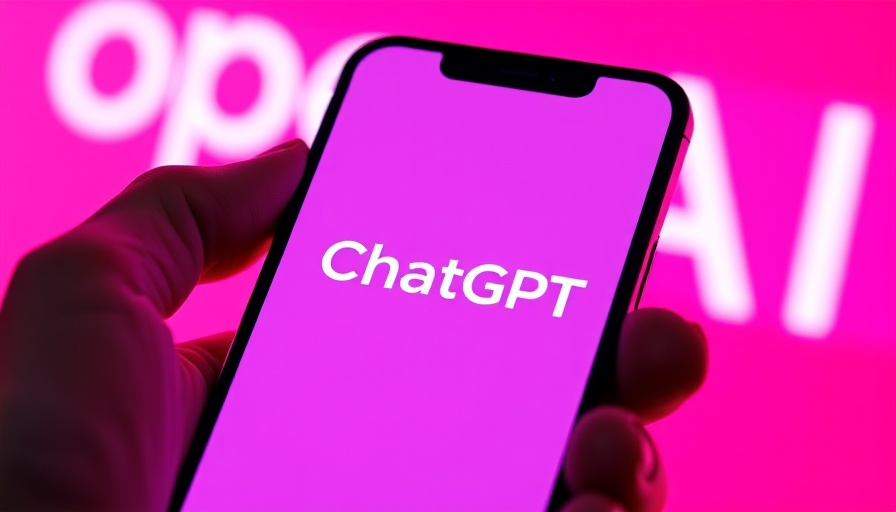
Unlocking the Future: Why ChatGPT Needs These Five Essential Features
As AI technology rapidly evolves, it’s imperative for tools like ChatGPT to adapt and innovate. Despite its utility in various industries, there remain gaps that could enhance user experience and efficiency. For CEOs, marketing managers, and business professionals, understanding these gaps is crucial as we navigate through an increasingly competitive tech landscape.
1. Integrated Visual Memory: A Game Changer
One of the most significant features ChatGPT currently lacks is its ability to retain visual context from previous interactions. As a professional tool, having an integrated screenshot memory would allow the chatbot to 'remember' visuals shared by users during discussions. This could revolutionize how complex projects are managed and reviewed, enabling users to troubleshoot more effectively by carrying context from one session to the next.
2. Enhanced Organizational Capabilities for Chats
While OpenAI’s introduction of an Image Library has made managing visuals easier, it falls short of effectively organizing conversations themselves. Implementing smarter chat organization features, such as topic-based categorization or tags, would streamline access to important discussions. Imagine being able to retrieve a project-specific discussion effortlessly, without wading through unrelated threads.
3. Text-to-Video: The Next Frontier
As competitors like Google’s Veo 3 and Runway AI push boundaries, it’s essential for ChatGPT to evolve with the technology. The capability to generate videos directly from text prompts would not only enhance creative projects but significantly improve communication and marketing efforts. With video content becoming increasingly important in digital marketing strategies, this feature feels like a necessary evolution.
4. Adaptive Custom GPTs: Personalization at its Core
While Custom GPTs provide users some level of personalization, the initial setup can be cumbersome. Automating this process to create tailored GPTs based on user behavior and preferences would make the technology much more accessible. A 'build-as-you-go' approach could truly democratize the power of AI for both casual users and experts alike.
5. Reading and Narration Capabilities for Scanned Texts
Another significant limitation is ChatGPT's inability to read and vocalize scanned texts, such as handwritten documents or PDFs. Incorporating this feature could not only serve students and researchers but also help busy professionals absorb information more efficiently. Imagine listening to an old textbook being read aloud with the ability to ask questions in real-time!
Addressing Challenges with Innovation
These proposed enhancements for ChatGPT represent a broader trend in AI development: the need for tools that not only assist but seamlessly integrate into our workflows. As the demands of modern business continue to evolve, so must the technology that supports it. The investment in features that enhance user experience can lead to more robust AI systems that drive innovation across industries.
As we see AI tools becoming more prevalent in various sectors, it’s crucial for professionals to stay informed and adaptable. Embracing AI does not just involve utilizing existing features—it also means advocating for the advancements that will shape our future workplaces. Understanding these gaps can help professionals make informed decisions when selecting technology that aligns with their business objectives.
In conclusion, as we delve deeper into the era of AI, recognizing the essential features that tools like ChatGPT should have is vital for ensuring they meet our evolving needs. Keeping a keen eye on these developments is not just beneficial; it’s essential for staying competitive in a fast-paced business world.
 Add Row
Add Row  Add
Add 




Write A Comment